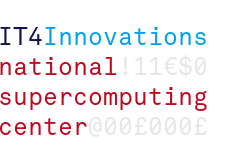Speaker
Dr
Dominik Legut
(IT4I)
Description
Graphene bears huge potential in spintronic applications in which the graphene’s
contact with ferromagnetic metals plays a crucial role. We present magneto-optical
investigations of graphene on Co by means of resonant magnetic reflection
spectroscopy, the transversal magneto-optical Kerr-effect (T-MOKE) and the x-ray
magnetic circular dichroism (XMCD). Exploiting linearly polarized synchrotron
radiation in the soft x-ray region across the carbon 1s edge the π- and σ- bondings
of graphene could be excited individually to test their importance for the magnetic
coupling between graphene and the substrate. A broad magnetic signal was
obtained over a wide energy range from 255 eV to 340 eV with enhanced T-MOKE
peak values of 1.5% at the π – resonance energy near 285 eV. From data of
corresponding T-MOKE spectra across the 2p edge of the Co substrate we deduce an
induced magnetic moment of on carbon of 0.05 - 0.065 μ B. This is slightly larger
than the magnetic moment of amorphous carbon induced by Fe in a Fe/C multilayer
[1]. By Using T-MOKE spectroscopy a hysteresis curve was monitored recorded at
the C 1s showing demonstrating ferro-magnetic behavior of graphene on Co. An
identical hysteresis curve was obtained at the Co 2p edges showing that magnetism
in on the carbon atoms is induced by the ferromagnetic Co substrate. From energy
and polarization dependence we conclude that the magnetism in graphene is
carried by the π – orbitals which is confirmed by XMCD spectra. These show a strong
resonant peak of 4% at the π – energy and negligible contributions at the σ – energy.
Further onmore, from the XMCD signal the difference in the spin- polarized density
of states (DOS) of graphene could be deduced from the XMCD signal. The experimental recordings is challenge by the first-principles calculations.
Primary author
Dr
Dominik Legut
(IT4I)

